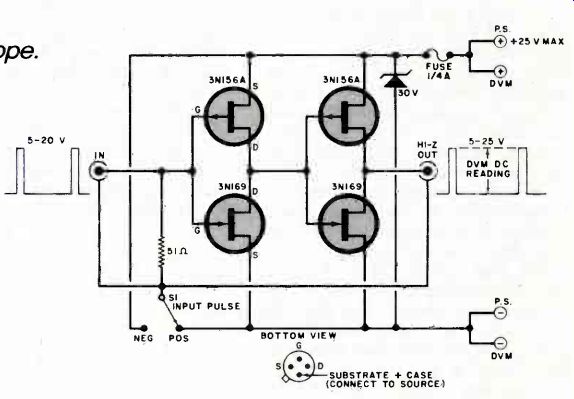Easy-to-build circuit amplifies input pulses when calibrating an oscilloscope.
By IMRE GORGENYI
WHEN working with very narrow, low-amplitude, low-energy pulses, it is advantageous to calibrate the scope you are using at actual working conditions with probes and attenuators in place. This is not always easy since pulse amplitude calibrators usually have low-level outputs-often under one volt.

The circuit can be assembled on perforated board.
The simple, all-FET circuit shown here provides pulse amplitudes to 25 volts, if desired, from pulse inputs of 5 to 20 volts. Since the two FET pairs are driven to their open-saturated condition, output pulses have the same amplitude as the power supply voltage. Absolute amplitude of the output can be monitored by a DVM at all times.
The circuit can handle narrow pulses and slow repetition rates. It can be assembled on a small piece of perforated board using BNC connectors for the input and output and can be connected directly in the 50-ohm line between the pulse generator and scope. The circuit, including power supply and digital voltmeter connectors, is "floating." Circuit protection is formed by the fuse and zener diode.
Source: Computers and Electronics--Experimenter's Handbook (1984)
Also see:
Cancel Rumble With This Bass-Summing Amplifier
Automatic Line Voltage Regulator